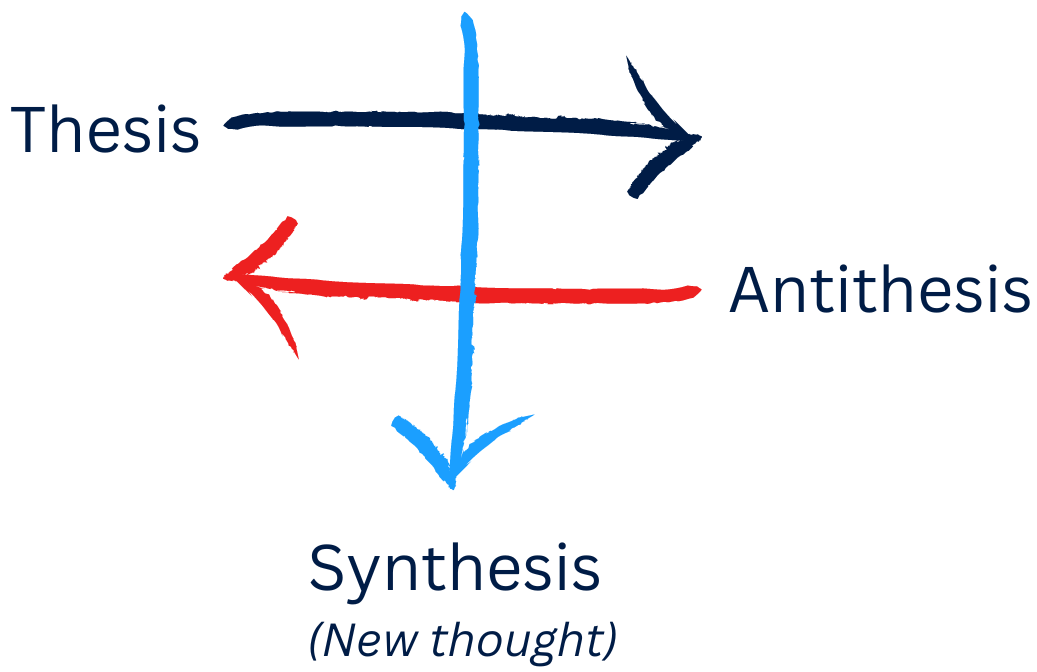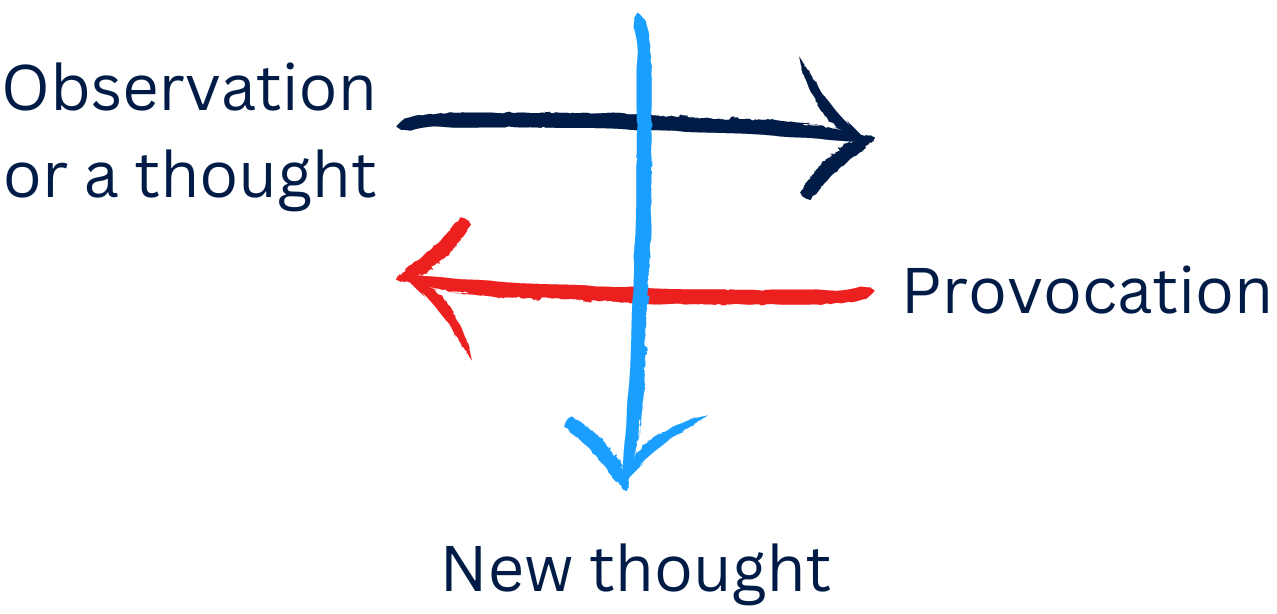
14 Aug How to Find a Solution to a Problem
Aug 14, 2024
Imagine you have a problem and you need a solution. But before jumping into searching for one, I’d ask a question. What is the definition of the term “solution”?
After thinking about it, I came up with the following definition:
A solution is a thought or a sequence of thoughts presenting an idea or a series of steps. If I follow these steps and apply them to the problem, it should be eliminated and cease to exist.
How Does a New Thought Emerge?
Speaking of thoughts, that reminds me of Hegel – a German philosopher who lived from 1770 to 1831 – who proposed the dialectical method of argument. This method suggests that if we have a thesis (a proposition or statement), an antithesis (a counter-proposition or opposing statement) that contradicts or negates the thesis, their conflict leads to a synthesis (a new proposition), or a thought.

We can also say that a new thought, implying a new idea, can emerge by provoking our existing thoughts.

We can also conclude that in the absence of provocation, our line of thinking is most likely not going to evolve or lead to new insights and ideas. We’ll simply get more of the same.

In other words, a thought or sequence of thoughts representing a solution to our problem could emerge by introducing two or more external lines of thought that contradict and debate with the one we initially held.
To simplify it, to find a solution to a problem – using the dialectic approach – we need to provoke ourselves. This can be achieved in various ways:
- Reading books or publications, or listening to interviews or podcasts with people who provoke our thinking.
- Meeting in person with people who do not necessarily agree with us but are trying to find a solution or to determine whether a solution exists at all. We must keep in mind that there are things in this world which do not have a solution, and it is healthy for us to find that out as early as possible.
- Engaging in activities that are unusual for us may provoke new thoughts. This could include reading a book of a genre we typically don’t explore, or even travelling to a place we haven’t been before.
As a follow-up to this publication, I’ll delve deeper into various actions that can stimulate our thinking, bringing insights, new ideas, and solutions to a business problem we have – “Ways to Find a Solution to a Problem”.
